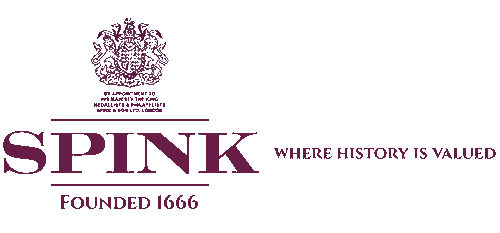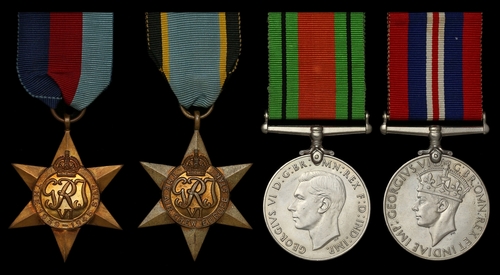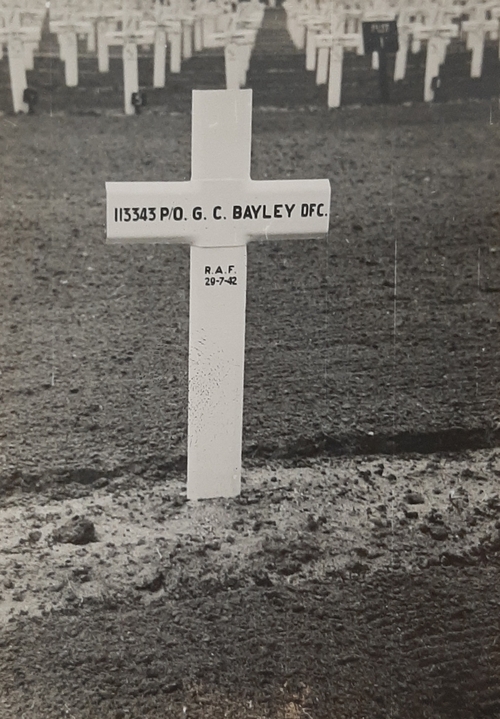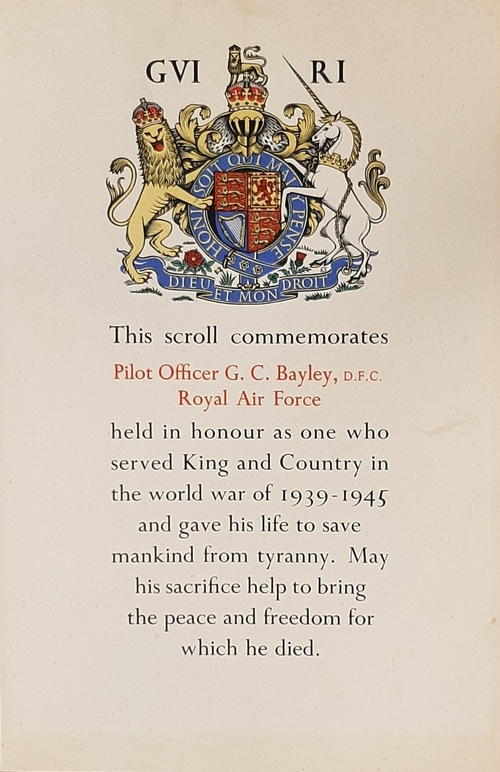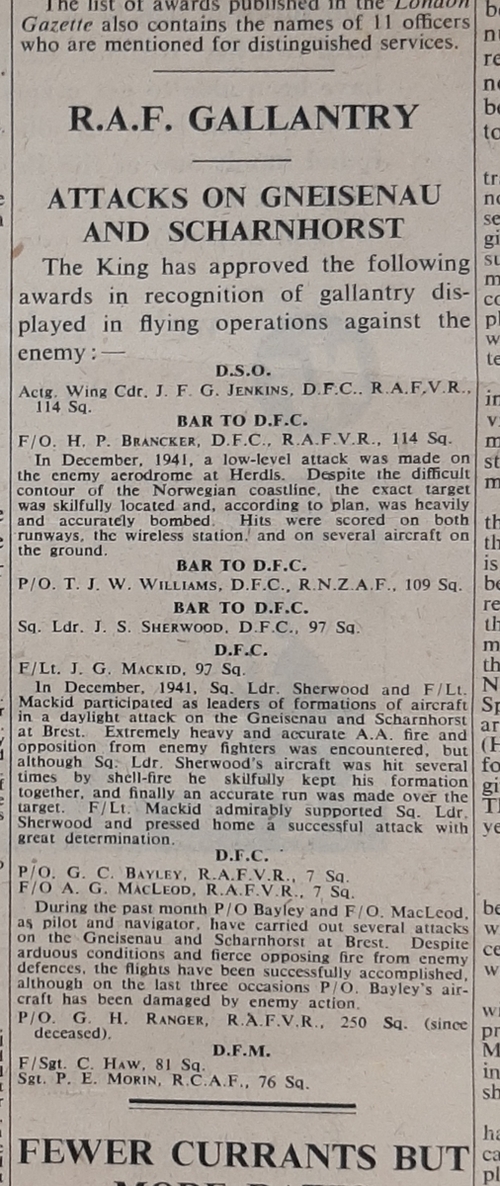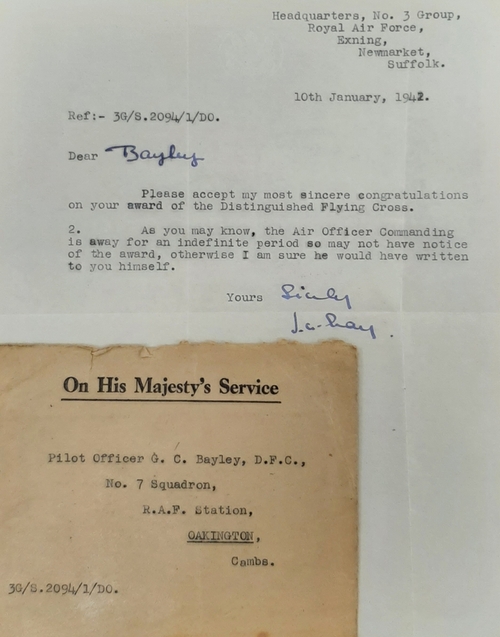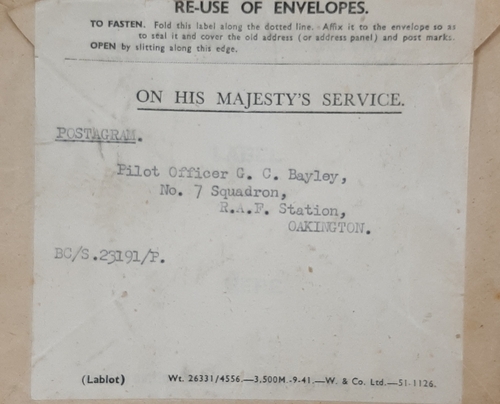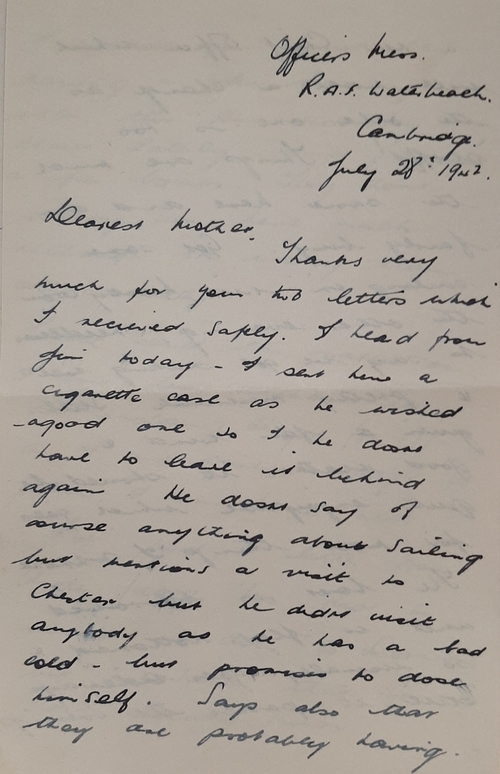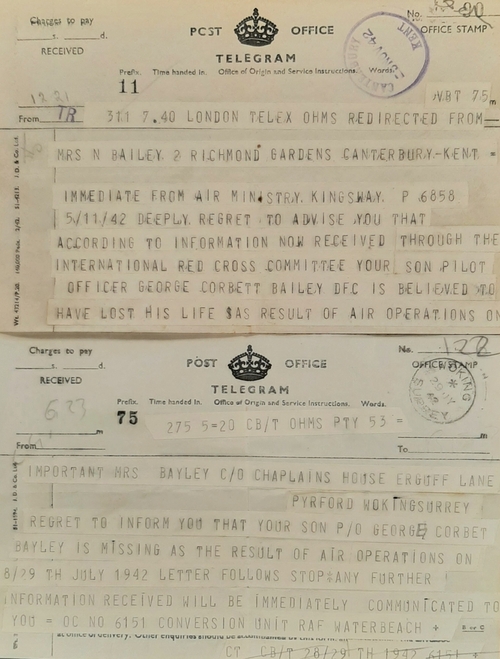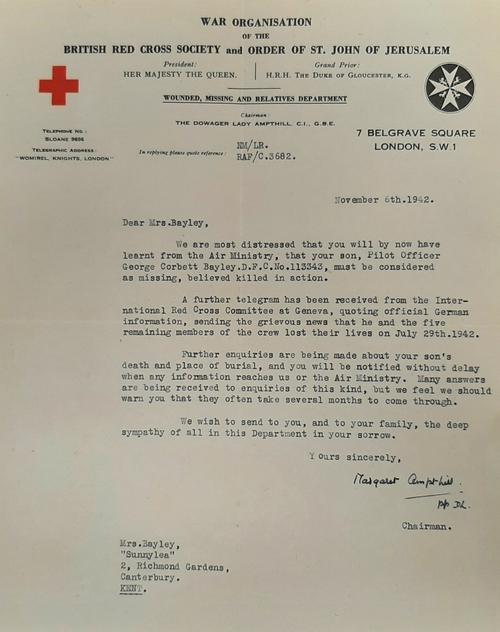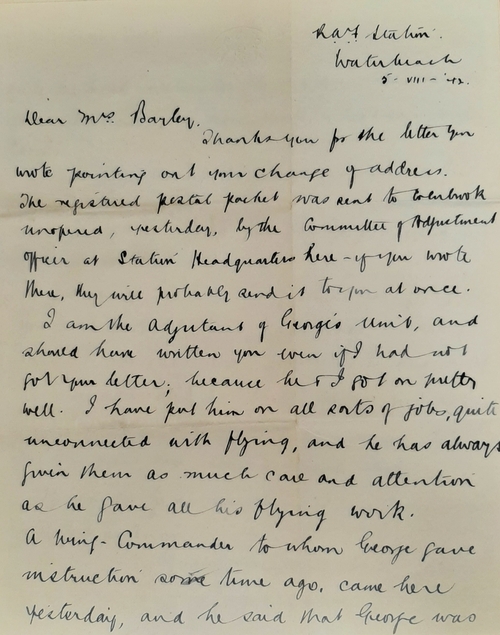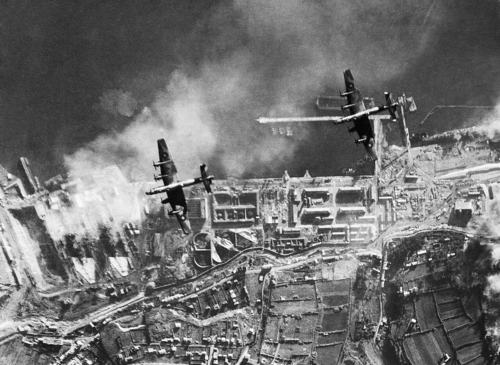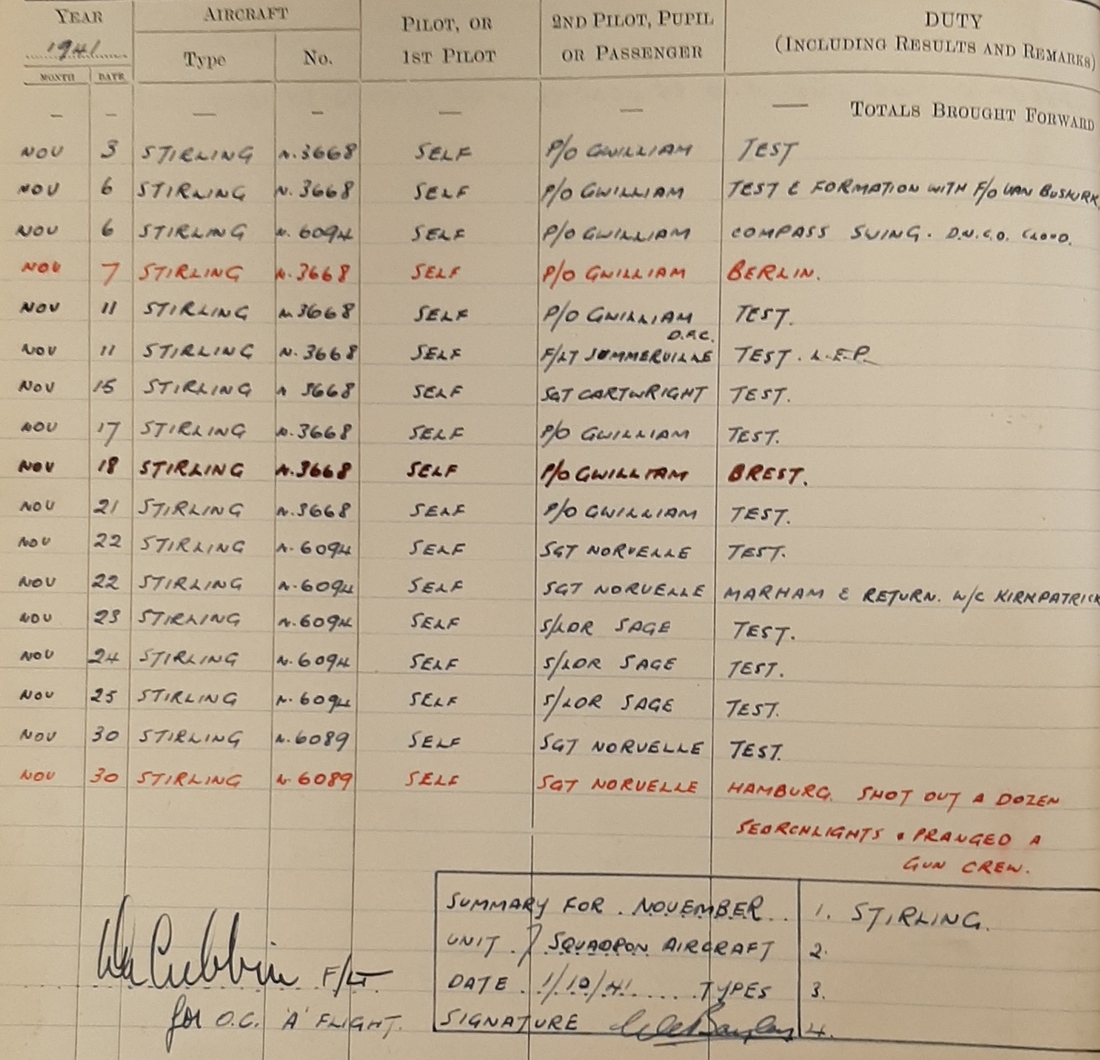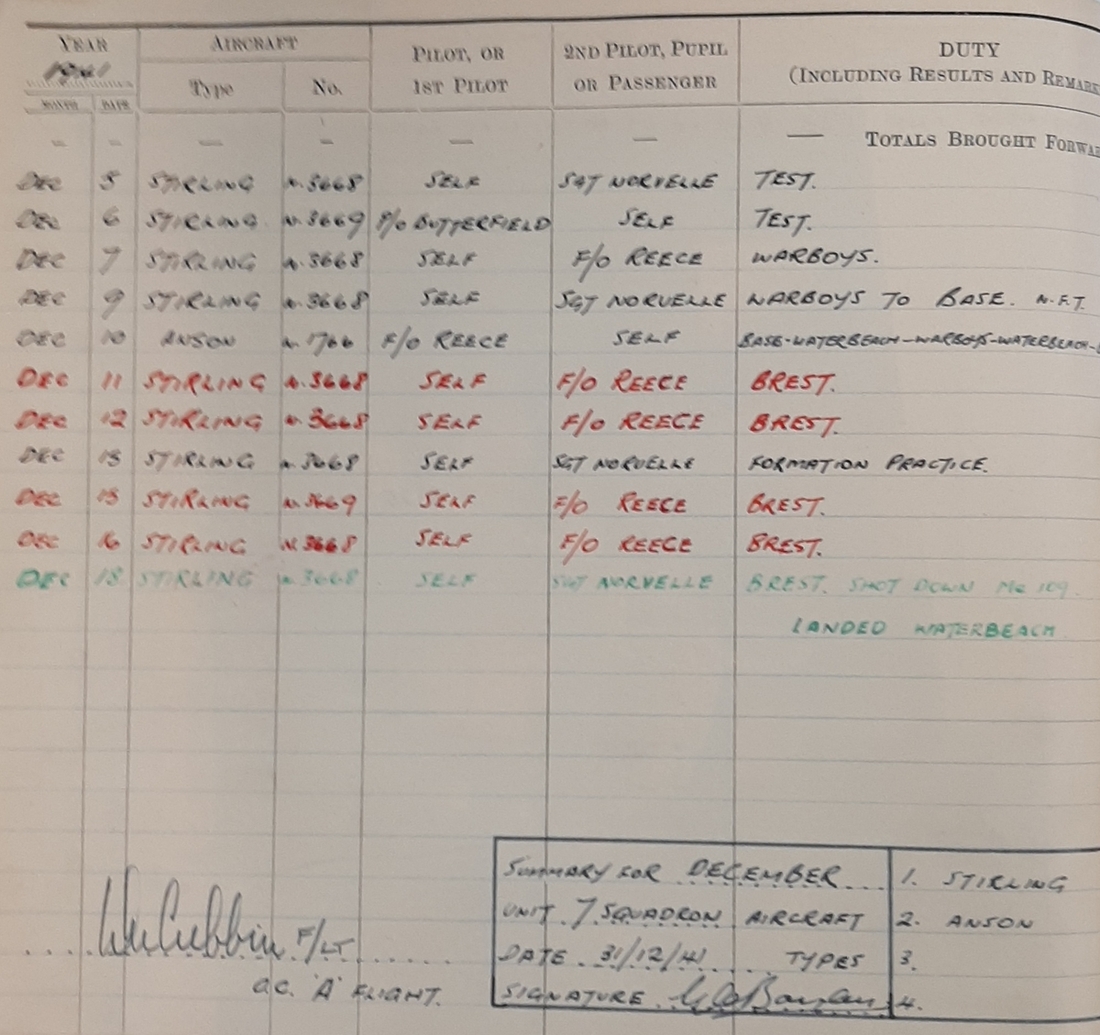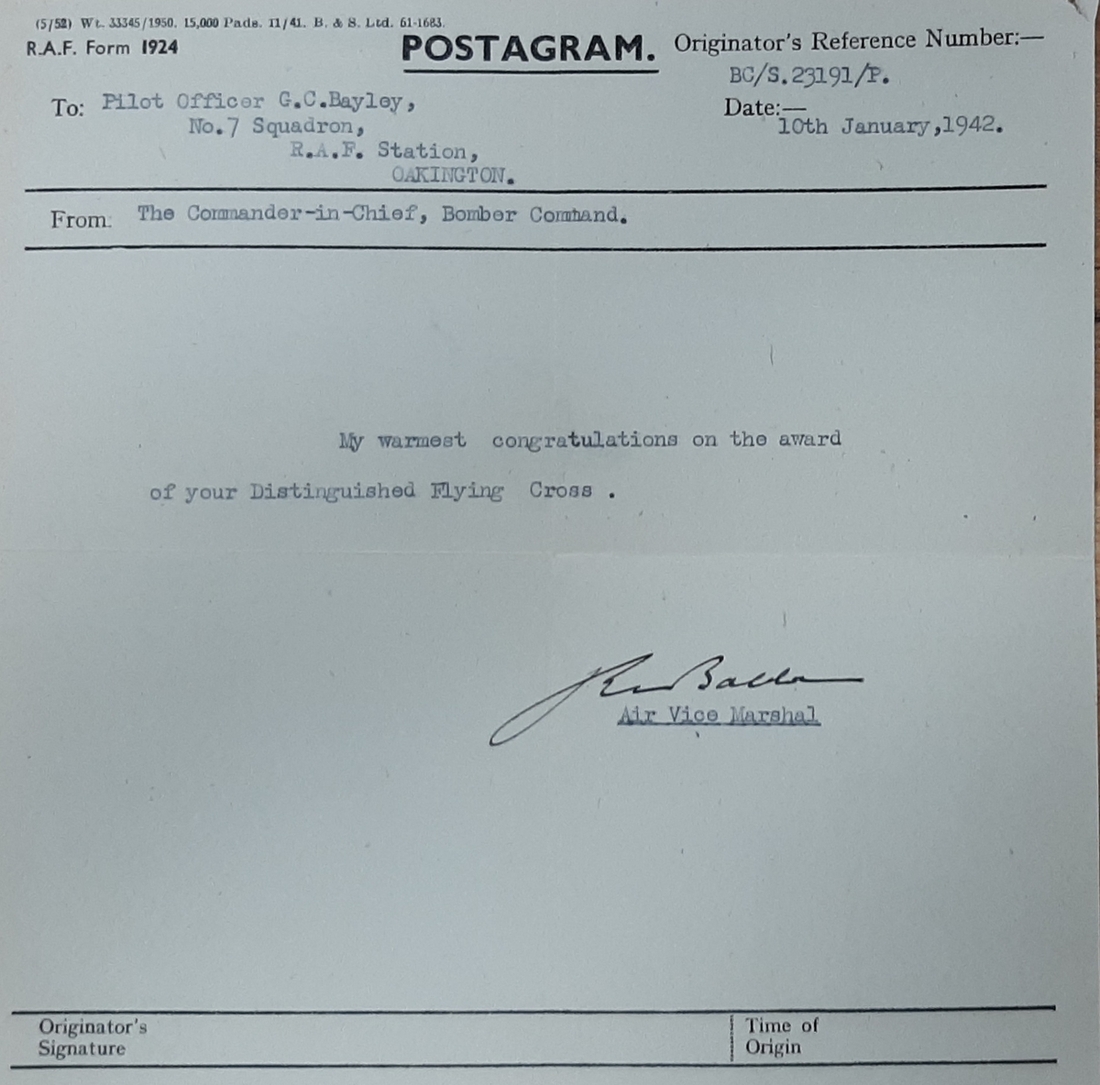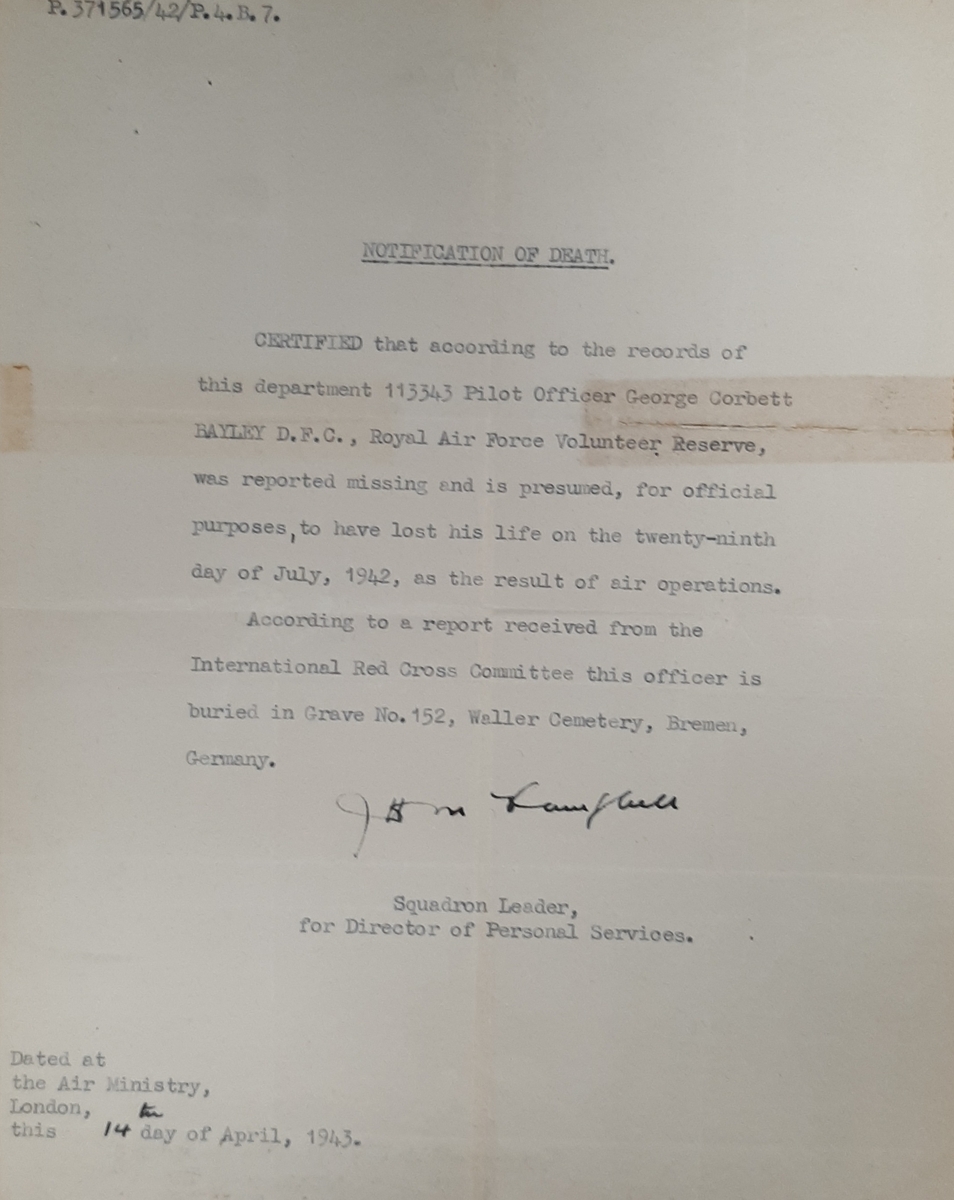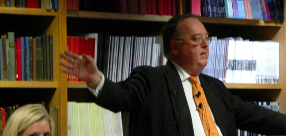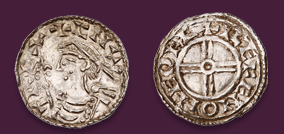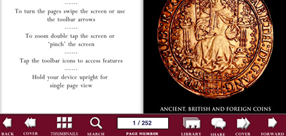Auction: 25003 - Orders, Decorations and Medals
Lot: 63
The well-documented campaign group of four awarded to Pilot Officer G. C. Bayley, D.F.C., Royal Air Force, who was decorated for his bravery during the raid on Brest to destroy Scharnhorst and Gneisenau in December 1941, he was tragically killed in action just two weeks after receiving his decoration at Buckingham Palace
1939-45 Star; Air Crew Europe Star; Defence and War Medals 1939-45, sold together with a comprehensive archive including the recipient's Flying Log Book and named Buckingham Palace Condolence Scroll, good very fine (4)
[D.F.M.] London Gazette 23 January 1942, the original citation states:
'During the past month, Pilot Officer Bayley and Flying Officer MacLeod, as pilot and navigator respectively, have carried out several attacks on the enemy warships Gneisenau and Scharnhorst at Brest. Despite arduous conditions and fierce opposing fire from enemy defences, the flights have been successfully accomplished although on the last 3 occasions Pilot Officer Bayley's aircraft has been damaged by enemy action. Throughout these missions, which have entailed a high degree of navigational skill and expert knowledge, Flying Officer MacLeod has fulfilled his duties with conspicuous success. Pilot Officer Bayley and Flying Officer MacLeod have always displayed great courage, skill and determination throughout the many sorties in which they have taken part.'
George Corbett Bayley was born on 10 December 1918, the son of Herbert and Nancy Bayley of Kent. He attended Ashford Grammer School in Kent, he is commemorated upon their war memorial. Bayley's father died in 1930 and as such he appears upon the 1939 census with his mother and brother at 'Sellindge', Ramsgate Road, Broadstairs, Kent. At the time Bayley was working at the Municipal Engineering (Surveyor's) Department, Broadstairs and a member of the Civil Air Guard.
Enlisting at Uxbridge at some stage between September 1939 - June 1940, he qualified to fly Stirlings in July 1941.He flew his first mission over Bordeaux with Flight Sergeant Collins on 11 May 1941 as 2nd Pilot. Switching to a crew commanded by Squadron Leader Speare Bayley flew six missions in June 941, including one of 23 June over Kiel which saw their machine's rear turret disabled by flak. A further raid over Hamburg saw them chased by a fighter, however fortunately, Speare was able to evade their pursuer.
Starting to fly as 1st Pilot in September 1941 his first mission was over Kiel before later joining one of the Squadron's first raids over Brest on 18 November. Appointed Flight Sergeant with No. 7 Squadron on 28 November 1941 he was present for a major raid on Hamburg on 30 November, his log book relates the what followed stating: 'Hamburg shot out a dozen searchlights & pranged a gun crew'. The Daily Express followed up on this with an article which states:
'Stirling Raider's Hedgehop
Express Air Reporter
One of the giant Stirling bombers which battered Hamburg on Sunday night divided into a group of searchlights, fired down the beams and put out a dozen of them, then flew on over 60 miles of Germany almost at ground level before climbing.
"Once two guns fired at us at point-blank range," said the pilot. [Bayley] "But they missed."
The Germans claimed yesterday that their naval units shot down 10 of the 20 planes lost by Bomber and Coastal Commands during this and other big attacks on shipping and ports in North-West Germany.'
No. 7 Squadron was detailed to target the German Battleships Scharnhorst and Gneisenau in December 1941. They launched repeated attacks with Bayley flying five between 11-18 December, only the last his log book notes an ME109 shot down. The Daily Mail reports of these attacks:
'Waves of Britain's heaviest bombers swooped on Brest Harbour in the winer sunlight yesterday and let loose the biggest daytime attack of the war on the German battleships Scharnhorst and Gneisenau. And they scored direct hits.
Stirlings, Hallifaxes, and Manchesters made attack after attack in line abreast.
The Germans harried them with the hottest defence they could muster.
As they went over in perfect formation our bomber crews saw their strong fighter escort "mixing it" with the German planes - sometimes more than 50 machines at a time in a whirling battle.
In harbour with the much-blitzed German battleships lies the cruiser Prinz Eugen. All three have for long been undergoing repairs.'
The Squadron record book notes the message of congratulations sent to the Squadron by the Flag Officer Commanding Submarines: 'I do congratulate you. I do not think I will bother to send my submarines to sea next time'.
Bayley was commissioned Pilot Officer not long later on 28 December 1941, he did not fly any further missions that month but did take two more swipes at Brest in early January 1942. Not long later the Scharnhorst, Gneisenau, and Prinz Eugen made their 'channel dash' and the Squadron returned to targeting heavy industry.
Bayley was transferred to 1651 Conversion Unit in February 1942, despite being largely a training unit he did see occasional war operations with them, the first being over Essen on 1 June. His role here was somewhat broader than it had been with No 7 Squadron, seeing him undertake a 'Nickel Raid', dropping propaganda leaflets and photography missions.
While serving with this unit he was presented with his D.FC. at Buckingham Palace on 14 July 1942. Just fifteen days later he was part of another 'War Operation' raid over Hamburg on 28 July. Bayley was hit by flak near Bremen and crashed in the suburbs at 2.45 the morning of 29 July, his entire crew was killed and Bayley himself mortally wounded. He died at the Prisoner of War Section of Rotenburg/Hann Hospital; sold together with copied research and a comprehensive archive of original material comprising:
i)
Flying Log book from22 August 1940-28 July 1942.
ii)
Portrait photograph of the recipient in uniform.
iii)
Several Newspaper clippings.
iv)
Correspondence relating to the award of the D.F.C. from the Central Chancery and the recipient's commanding officer.
v)
Illuminated Scroll of Honour.
vi)
Personal correspondence between the recipient and his mother, including one written on the day of his death, as well as a letter from a friend of the recipient to the recipient's mother.
vii)
Photograph of the recipient's grave.
viii)
Telegrams and letters confirming his death as well as a letter of condolence from the Adjutant of his Squadron.
ix)
Probate Application ticket.
Subject to 20% VAT on Buyer’s Premium. For more information please view Terms and Conditions for Buyers.
Estimate
£400 to £600
Starting price
£320
